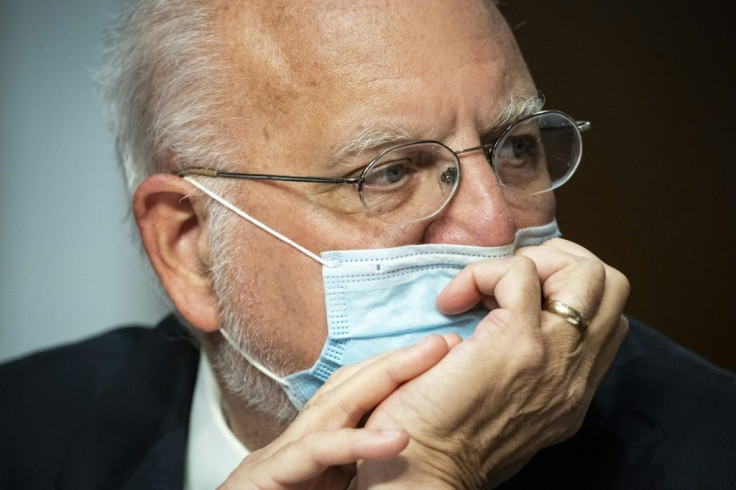Coronavirus Vaccine Will Be Free To Americans, Ship Out Within 24 Hours Of Approval
KEY POINTS
- The federal government has issued plans to transport COVID-19 vaccines across America once they gain approval
- Limited supply, prioritization means mass inoculation are unlikely until well into 2021
- The FDA has never issued an emergency use authorization to a previously unapproved vaccine
Federal officials running Operation Warp Speed (OWS) on Wednesday issued plans aimed at distributing free COVID-19 vaccines nationwide within a day of their approval.
Paul Ostrowski, OWS deputy chief of supply, production and distribution, said the goal of OWS is to begin shipping to administration sites 24 hours after a vaccine receives either an emergency use authorization (EUA) or full approval.
The OWS plans released Wednesday also call for a free nationwide vaccination campaign to begin either later this year or in January. It's widely held health care workers, other essential employees and people at high risk of severe illness will likely be inoculated first.
The Advisory Committee on Immunization Practices of the U.S. Ceners for Disease Control and Prevention (CDC), the National Academy of Medicine and other organizations will determine who should be first on the list to receive the inoculations.
The OWS plan, however, hinges on whether the U.S. Food and Drug Administration (FDA) will issue an EUA for the vaccines or fully approve their use. An EUA has never been granted to a previously unapproved vaccine.
The only vaccine-related EUA the FDA has granted went to the anthrax vaccine developed by Emergent BioSolutions in 2005, but that case involved an already cleared vaccine.
The likely candidate vaccines slated for use in 2021 are mRNA-1273 being developed by Moderna and the National Institute of Allergy and Infectious Diseases, or the BNT162b2 vaccine candidate from Pfizer-BioNTech. Both vaccines require two doses either 21 or 28 days apart.
"We have to be able to tell the person when it's time to come back in for the second shot," said Ostrowski, noting that the vaccines are not interchangeable.
Distribution of the new vaccines will follow a playbook developed by the CDC. This guide instructs state health agencies to organize a vaccine planning committee consisting of leaders from different community groups, such as hospitals, long-term care facilities and pharmacies. It advises states to prepare for a limited supply of vaccine doses in the fall.
Later on Wednesday, CDC director Dr. Robert Redfield told a Senate subcommittee any vaccine is unlikely to be widely available to most Americans before the summer or early fall of 2021. The deciding factor in this availability is FDA approval, he said.
"I think there will be vaccine that will initially be available some time between November and December, but very limited supply, and it will have to be prioritized," said Dr. Redfield.
"If you're asking me when is it going to be generally available to the American public so we can begin to take advantage of vaccine to get back to our regular life, I think we're probably looking at late second quarter, third quarter 2021."

© Copyright IBTimes 2025. All rights reserved.





















